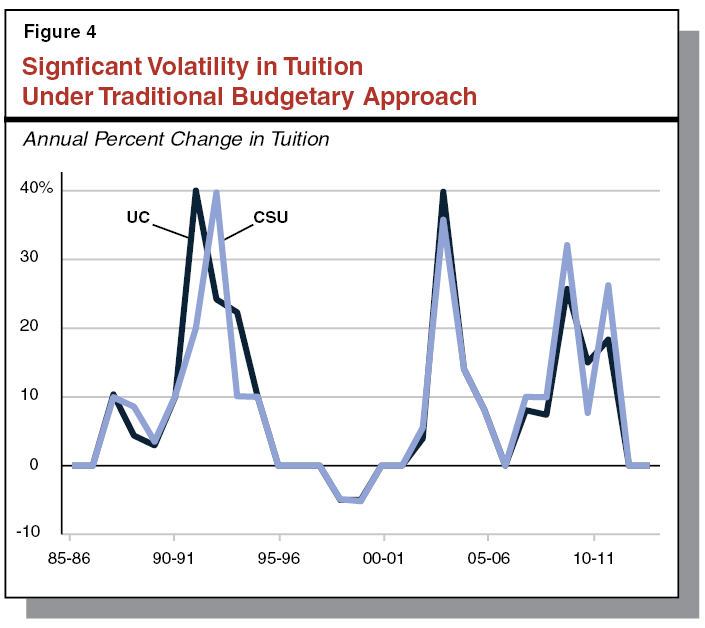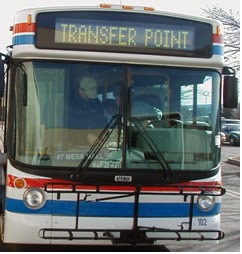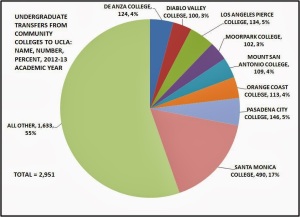The Legislative Analyst’s Office (LAO) has issued a report on UC and CSU funding. LAO is usually viewed as a neutral agency. But it is a component of the legislature. So it tends to favor approaches that add to legislative control as opposed to, say, gubernatorial control. This report is no exception.
LAO seems to want to return to what it terms the “traditional” approach to funding, but with bells and whistles added to monitor legislative goals. The traditional approach seems to be one focused on undergraduate enrollment. But in fact the tradition – such as it is – has been to forget about tradition and cut the budget during state budget crises, in the knowledge that UC and CSU can raise tuition. Indeed, as the chart above indicates, these traditional deviations from tradition dominate tuition decisions.
The LAO is uncomfortable with the habit of the governor of just proposing dollar increases not linked to enrollment and then extracting some promises from the university to do this or that, e.g., to spend $10 million on online education.
It might be noted that since LAO chose to lump UC and CSU together, it might have discussed a sore point namely the fact that CSU, as a part of CalPERS, gets its pension costs taken care of by the state whereas the state likes to stand aloof from the UC pension and its costs.
You can read the report at http://lao.ca.gov/reports/2014/education/higher-ed-budgetary-practices/budgetary-practices-021114.pdf
In any case, there is much nostalgia for tradition, albeit with some uncertainty as to what that is. Sounds familiar!
[youtube http://www.youtube.com/watch?v=gRdfX7ut8gw?feature=player_detailpage]









